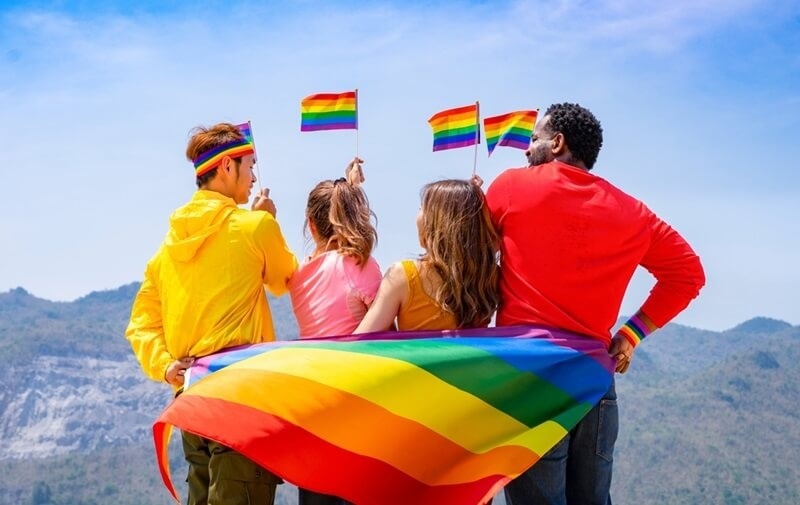Fair Play: Addressing Transgender Inclusion in Sports Arenas

Transgender and non-binary athletes are increasingly confronting legislative challenges that threaten their participation in sports. These challenges are compounded by persistent misconceptions and discriminatory policies that undermine their rights and the inclusivity of sports environments.
However, embracing inclusive sports policies not only supports the rights of these athletes but also promotes a healthier, more inclusive society. Transgender people in sports continue to break barriers and foster inclusivity across various athletic disciplines. Let us learn more.
The Current State of Transgender Athletes in Sports
Recent years have seen a surge in anti-LGBTQ+ legislation that directly impacts transgender athletes, with numerous states proposing or enacting laws that restrict their participation in sports consistent with their gender identity.
These legislative efforts are often fueled by misinformation and unfounded concerns about fairness in competition. Historically, discrimination against transgender and non-binary individuals in sports has not only limited their access to the valuable benefits of sports participation but also perpetuated stigma and isolation.
Leading Transgender Athletes in the Sports World
- Laurel Hubbard - A New Zealand weightlifter who made history as the first openly transgender woman to compete in the Olympic Games.
- Layshia Clarendon - The first openly transgender and non-binary athlete to play in the WNBA, also recognized for advocacy work within the LGBTQ+ community.
- Lia Thomas - Champion swimmer who has faced significant legislative and societal challenges but continues to break records in collegiate swimming.
- Rene Richards - A pioneering figure who challenged the United States Tennis Association's policies in the 1970s after her transition, making significant strides for transgender athletes in tennis.
- Chris Mosier - The first transgender man to qualify for and compete in the men's category of a World Championship for Team USA, who has also been influential in pushing the International Olympic Committee to modify its policy on transgender athletes.
- Balian Buschbaum - Former German pole vaulter who competed in the women's division at the Olympics before transitioning and becoming a vocal advocate for transgender rights in sports.
- Schuyler Bailar - One of the first transgender athletes to compete in an NCAA Division 1 men's team, who has used his platform to advocate for transgender rights in sports and beyond.
- Kye Allums - Broke significant barriers as one of the first openly transgender athletes in NCAA Division I, advocating for broader LGBTQ+ acceptance in collegiate sports.
- Jaiyah Saelua - Made history as the first openly non-binary and transgender woman to compete in a FIFA World Cup qualifier, challenging international sports norms.
- Quinn - Achieved a historic milestone as the first trans non-binary Olympic champion in soccer, symbolizing significant progress for inclusivity in sports.
Battle Against Transgender and Non-binary Rights in Sports
Over the past two decades, anti-LGBTQ+ politicians have leveraged disinformation campaigns against LGBTQ+ rights to rally their base, frequently targeting transgender and non-binary individuals. The focus of these attacks has shifted over time, from the so-called bathroom bills post-2015, which falsely claimed to protect women's and girls' safety, to the current emphasis on transgender and non-binary youth in sports. These political maneuvers fabricate concerns about sports participation and distort information about gender-affirming healthcare for trans youth.
In 2021, over 250 legislative proposals aimed at undermining transgender rights were introduced, with at least 35 specifically designed to obstruct access to necessary, gender-affirming medical care for transgender youth. Notably, Arkansas and Tennessee enacted laws restricting such medical care despite strong opposition from major childrens health organizations like the American Academy of Pediatrics and the American Association of Child and Adolescent Psychiatry. These laws are not founded on any real need or incident but are driven by a discriminatory agenda to further marginalize and isolate transgender youth.
After their efforts to restrict access to appropriate restrooms failed, these legislators have now turned their focus to sports, using it as a new battleground to perpetuate myths and earn political capital. This pivot to sports is just the latest tactic in a long-standing fight against transgender and non-binary individuals, illustrating a persistent effort to deny them the opportunity to live authentically and participate fully in society.
Addressing Stereotypes in Anti-Trans Sports Legislation
Anti-trans sports bans often rely on stereotypes with sexist implications, unfairly targeting transgender youth. Natural variations in physical characteristics, such as height or build, are inherent in sports, especially among younger athletes who are developing at different rates. Explore further the challenges of transgender athletes and how understanding natural physical diversity is key to fair play in sports.
Opponents of trans inclusion ignore the fact that trans girls, who make up a small fraction of the student population and exhibit diverse interests and abilities in sports, are not dominating female sports categories. These stereotypes fail to recognize that, like all youth, trans athletes vary in their physical attributes and commitment to sports, making these bans both baseless and discriminatory. The role of transgender people in sports is evolving, highlighting the importance of equality and representation at all levels.
Trans Athletes in Sports Across States and Major Organizations
Transgender athletes have been participating in sports across twenty states, the International Olympic Committee (IOC), and the NCAA for decades without issue. The lack of problems arising from their participation highlights that the existential concerns voiced by some legislators are more about political maneuvering than genuine sports integrity. These lawmakers use transgender youth as a focal point in culture wars, proposing unnecessary bans that are largely unrequested by the sports community.
Recently, the NCAA made a contentious political decision to remove non-discrimination protections from its constitution and to align with IOC guidelines, a move seen as shirking its responsibility to protect student-athletes. However, this decision hasn't significantly altered the landscape: transgender athletes continue to compete under specific sport-dependent guidelines.
The benefits of sports participationenhanced physical health, improved mental and emotional well-being, increased self-confidence, and developed social skillsare well-documented by entities like the Presidents Council on Sports, Fitness, & Nutrition. Denying transgender youth access to these benefits is not only unjust but also detrimental to their overall development.
Support for transgender athletes also comes from high-profile figures and organizations within the sports community. Champions like Megan Rapinoe, Billie Jean King, and Dwyane Wade, alongside institutions such as the Ivy League and the CSCAA, have publicly advocated for the rights of transgender individuals to compete, emphasizing inclusivity and equality in sports.
Mental Health and Discrimination Among Transgender Youth
Transgender youth often face significant mental health challenges, which can be exacerbated by social exclusion and discriminatory practices. Being barred from sports participation adds another layer of adversity. Sports are not just physical activities; they play a crucial role in enhancing emotional resilience, social integration, and overall well-being. For transgender youth, access to sports can mean access to a supportive community, opportunities for personal accomplishment, and a sense of normalcy.
The exclusion from these activities can lead to isolation, increased stress, and a greater risk of mental health issues such as depression and anxiety. Surveys consistently show that transgender youth who are excluded from participating in activities that align with their gender identity report higher rates of suicidal ideation and attempts compared to their peers who are included. For more resources and support, explore initiatives under LGBTQ+ suicide prevention aimed at addressing the mental health needs of transgender youth.
U.S. and State Policies on Transgender Sports Participation
Federal policies on transgender participation in sports have varied significantly across different administrations. During the Obama era, interpretations of Title IX expanded to protect the rights of transgender students to participate in sports according to their gender identity. However, this guidance was rescinded under the Trump administration, which argued that such decisions should be left to the states. This shift has led to a patchwork of state-level policies, creating a landscape where a transgender student's rights and opportunities can vary drastically by geography.
At the state level, the disparity in policies creates uneven opportunities for transgender athletes. Some states have progressive policies that fully support transgender students participating in sports consistent with their gender identity without requiring medical intervention. These states recognize the importance of inclusion for the mental and physical health of all students. Other states have restrictive policies that impose burdensome requirements on transgender athletes, such as undergoing hormone therapy or surgery or having to participate under the gender assigned at birth, which can be discriminatory and harmful to the well-being of transgender youth.
The inconsistency of these policies affects not only the ability of transgender students to participate in sports but also their overall school experience and mental health. In states with inclusive policies, transgender students are more likely to feel accepted, have higher self-esteem, and are less likely to experience mental health issues. Conversely, in states with restrictive or no policies, transgender students face higher risks of discrimination, exclusion, and the negative mental health outcomes associated with these experiences.
The need for consistent, inclusive policies is clear. By supporting the rights of transgender students to participate in sports, states can help promote a healthier, more inclusive environment that benefits all students.
You may also like: Risk Factors for Non-Suicidal Self-Injury Among Trans Youth
Conclusion
This comprehensive discussion underscores the challenges and systemic barriers transgender and non-binary athletes face in sports. It highlights the critical need for inclusive policies that not only protect their rights but also foster their well-being and ensure that sports remain a powerful platform for all to thrive. Stay updated with transgender people in sports news, showcasing their achievements and the ongoing challenges they face.
This content was created by AI























